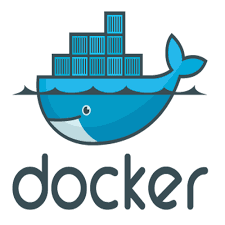Best Incident Management Software Shortlist
Here's my pick of the 10 best software from the 27 tools reviewed.
Our one-on-one guidance will help you find the perfect fit.
Managing software incidents efficiently is crucial. You face constant challenges in keeping systems running smoothly and minimizing downtime. Incident management software can be a lifesaver, helping your team respond quickly and stay organized.
I've spent time testing and reviewing these tools to give you an unbiased look at the best options available. I understand the nuances of SaaS development and the software market, and I'm here to share that knowledge with you.
In this article, you'll find my top picks for incident management software. I'll provide insights into each tool's unique features, helping you make informed decisions. Let's dive into finding the right solution for your needs.
Why Trust Our Software Reviews
We’ve been testing and reviewing SaaS development software since 2023. As tech experts ourselves, we know how critical and difficult it is to make the right decision when selecting software. We invest in deep research to help our audience make better software purchasing decisions.
We’ve tested more than 2,000 tools for different SaaS development use cases and written over 1,000 comprehensive software reviews. Learn how we stay transparent & check out our software review methodology.
Best Incident Management Software Summary
This comparison chart summarizes pricing details for my top incident management software selections to help you find the best one for your budget and business needs.
| Tool | Best For | Trial Info | Price | ||
|---|---|---|---|---|---|
| 1 | Best for remote management | Free trial + free demo available | Pricing upon request | Website | |
| 2 | Best for AI-powered ticket tagging | Free trial available | From $26/seat/month (3 seat minimum) | Website | |
| 3 | Best for IT monitoring and incident management | Free trial available | From $149/technician/month (billed annually) | Website | |
| 4 | Best for issue tracking | Free trial + free demo available | From $27/user/month | Website | |
| 5 | Best for log management | 30-day free trial + free demo | Pricing upon request | Website | |
| 6 | Best for asset tracking | 30-day free trial available | From $0.21/node/month (billed annually) | Website | |
| 7 | Best for IT teams | 14-day free trial + free demo available | From $19/user/month (billed annually) | Website | |
| 8 | Best for customer service | Free trial + free demo available | From $25/user/month (billed annually) | Website | |
| 9 | Best for compliance needs | Free demo available | Pricing upon request | Website | |
| 10 | Best for emergency planning | Free demo available | Pricing upon request | Website |
-

Docker
Visit WebsiteThis is an aggregated rating for this tool including ratings from Crozdesk users and ratings from other sites.4.6 -

Pulumi
Visit WebsiteThis is an aggregated rating for this tool including ratings from Crozdesk users and ratings from other sites.4.8 -

GitHub Actions
Visit Website
Best Incident Management Software Reviews
Below are my detailed summaries of the best incident management software that made it onto my shortlist. My reviews offer a detailed look at the key features, pros & cons, integrations, and ideal use cases of each tool to help you find the best one for you.
NinjaOne is a remote management and monitoring tool for IT teams looking to manage and support endpoints efficiently.
Why I picked NinjaOne: It's ideal for remote management, providing comprehensive tools for monitoring and supporting remote endpoints. The platform offers remote control capabilities, allowing your team to resolve IT issues from anywhere. Patch management ensures your systems are up-to-date and secure. Its automated monitoring alerts your team to potential issues before they become problems.
Standout features & integrations:
Features include automated monitoring to detect issues early, patch management to keep systems secure, and remote control capabilities for resolving IT problems. The tool also offers detailed reporting to help you track IT performance.
Integrations include ConnectWise, Autotask, Freshdesk, Zendesk, ServiceNow, Slack, Microsoft Teams, Google Workspace, QuickBooks, and Salesforce.
Pros and cons
Pros:
- Comprehensive remote control
- Effective patch management
- Detailed reporting capabilities
Cons:
- Requires setup time
- Limited customization options
New Product Updates from NinjaOne
NinjaOne Acquires Dropsuite
NinjaOne has acquired Dropsuite to enhance its backup and data protection services for cloud applications. For more details, visit the source: ninjaone.com/roadmap.
monday service is a platform designed to meet the diverse needs of teams handling incident management. It leverages AI-powered features to enhance service delivery across various sectors like IT, HR, and customer support.
Why I picked monday service: It stands out for its automation and AI ticket tagging features, which help with incident management. Automation handles repetitive tasks, while AI ticket tagging categorizes tickets automatically, ensuring that incidents are prioritized and addressed quickly. With no-code customization capabilities, you can also customize the platform to fit your team's specific needs and workflows without any technical expertise.
Standout features & integrations:
Features include predictive insights, centralized operations, and data collection for trend analysis. Predictive insights help anticipate potential issues so your team can address them proactively. Centralized operations ensure that all incident-related information is in one place, making it easier for your team to access and manage. Data collection for trend analysis provides insights into recurring incidents, helping you identify patterns and implement long-term solutions.
Integrations include Slack, Microsoft Teams, GitHub, GitLab, Jira, Figma, Outlook, Gmail, Zoom, Google Calendar, Zendesk, and Google Drive.
Pros and cons
Pros:
- Centralized platform allows for detailed project oversight
- Automation features significantly reduce manual work
- Effective task and project management features
Cons:
- Slight learning curve
- Limited features in free version
New Product Updates from monday service
Monday Service Launches Advanced AI Integrations
Monday service now advanced AI integrations, enable service teams to handle more work at scale by leveraging AI agents in-app to handle basic service requests and flag human-required ones. For more details, visit monday.com's update page.
Atera is an IT management platform built for IT professionals and managed service providers (MSPs). Its core offering combines remote monitoring and management (RMM), professional services automation (PSA), and help desk ticketing. IT monitoring and management is delivered through its built-in ticketing system, automated alerts, and AI-powered assistance, enabling technicians to stay on top of system health and quickly address emerging issues.
Why I Picked Atera: I added Atera to this list because of how it combines monitoring, alerting, and ticketing in one system. This allows IT teams to detect incidents early and act before they escalate. The real-time monitoring scans for performance issues or hardware failures, while alert thresholds convert issues directly into tickets. Atera's AI ticketing tools help prioritize and assign tickets automatically by analyzing keywords, which can help reduce delays caused by manual triaging. By packaging these functions together, Atera simplifies incident response for IT teams working across multiple environments.
Standout features & integrations:
Features includes AI Copilot, which generates ticket summaries and reply suggestions to accelerate resolution. Technicians can also use AI to generate troubleshooting scripts or knowledge base articles from existing tickets. Atera offers network discovery to identify devices across the IT environment and centralized asset management to track hardware status. The system includes remote access features, allowing technicians to investigate incidents without being onsite. For teams managing growing infrastructures, Atera also provides patch management and real-time monitoring dashboards.
Integrations include Microsoft Teams, Slack, ServiceNow, Okta, Azure Active Directory, Microsoft Outlook, WhatsApp Notifications, monday.com, Jira Software Cloud, Acronis Cyber Protect Cloud, Google Sheets, ChatGPT (OpenAI), Gmail, Google Calendar, Asana, Freshservice, ClickUp.
Pros and cons
Pros:
- Pay-per-technician pricing model
- Unified platform for RMM, PSA, and help desk
- Built-in AI support for ticket management and troubleshooting
Cons:
- Mobile app has fewer features than desktop version
- Limited customization of workflows
Issuetrak is an issue-tracking and business process management tool designed for organizations looking to manage and resolve issues efficiently.
Why I picked Issuetrak: It's focused on issue tracking, providing tools for managing customer inquiries and internal requests. The workflow automation feature helps your team automate repetitive tasks, saving time. Customizable forms allow you to capture the information you need for each issue. The tool's reporting capabilities give insights into issue trends, which can inform decision-making.
Standout features & integrations:
Features include workflow automation that helps your team handle repetitive tasks, customizable forms to capture necessary information, and reporting capabilities to gain insights into issue trends. The tool also supports task management, ensuring issues are resolved efficiently.
Integrations include Microsoft 365, Google Analytics, Gmail, Salesforce, Power BI, and thousands more through Zapier. You can also access the Issuetrak API for even more connections.
Pros and cons
Pros:
- Effective workflow automation
- Strong reporting capabilities
- Focused on issue tracking
Cons:
- Complex for beginners
- Performance can vary with the load
ManageEngine EventLog Analyzer is a log management tool designed for network components like devices and servers. It's aimed at organizations seeking to enhance network security with features like custom report building and centralized syslog management.
Why I picked ManageEngine EventLog Analyzer: It stands out for its log management capabilities, offering custom report building and centralized syslog management. You can detect security breaches with log forensics, making it ideal for enhancing network security. The tool provides in-depth log analysis, data visualization, and compliance support for regulations like PCI DSS and GDPR. Its real-time alerts and efficient log searches help your team respond swiftly to incidents.
Standout features & integrations:
Features include custom report building, which allows you to tailor log analysis to your needs, centralized syslog management for handling logs from various network components, and log forensics to identify security breaches. The tool also offers data visualization and compliance support for key regulations.
Integrations include Microsoft Active Directory, Microsoft Exchange Server, Microsoft SQL Server, Oracle, MySQL, Cisco, Juniper, Fortinet, and Palo Alto Networks.
Pros and cons
Pros:
- Custom report building
- Centralized Syslog management
- Real-time alerts
Cons:
- Complex setup process
- Limited user interface customization
InvGate Service Management is an IT asset management tool catering to organizations that need to manage physical, virtual, and cloud assets.
Why I picked InvGate Service Management: It's ideal for asset tracking, offering automated inventory discovery and lifecycle monitoring. You can optimize software licenses and manage contracts effectively. The visual CMDB provides a comprehensive view of IT assets, helping you understand relationships between assets and business services. These features make it a strong choice for managing various asset types.
Standout features & integrations:
Features include lifecycle monitoring, which helps you track asset status over time, compliance management to ensure all assets meet necessary regulations, and cost optimization which identifies savings opportunities. The tool also enhances IT governance and streamlines processes.
Integrations include Jira, Microsoft Teams, Slack, Zapier, Okta, Freshdesk, Zendesk, Salesforce, ServiceNow, and Google Workspace.
Pros and cons
Pros:
- Visual CMDB
- Automated discovery
- Software license optimization
Cons:
- Complex for beginners
- Occasional performance issues
Freshservice is a cloud-based IT service management tool designed for IT teams looking to improve service delivery.
Why I picked Freshservice: It's tailored for IT teams, with features like automated ticketing and a user-friendly interface. The tool's asset management capabilities help you track and manage IT assets efficiently. SLA management ensures timely incident resolution, reducing downtime. These elements make it ideal for teams focused on improving IT service delivery.
Standout features & integrations:
Features include a self-service portal that empowers users to resolve common issues independently, incident management to ensure quick response times, and SLA management to maintain service quality. The tool also offers a knowledge base for easy access to solutions.
Integrations include Microsoft Teams, Slack, Jira, Azure DevOps, Google Workspace, Salesforce, Zapier, Okta, Active Directory, and AWS.
Pros and cons
Pros:
- Automated ticketing system
- User-friendly interface
- Strong asset management
Cons:
- Limited customization options
- Requires user training
Salesforce Service Cloud is a CRM platform tailored for customer service teams aiming to boost customer satisfaction and loyalty.
Why I picked Salesforce Service Cloud: It's designed for customer service, integrating marketing and sales with service functions to enhance customer interactions. You can manage customer cases efficiently with its case management tools. The platform's knowledge base helps your team resolve issues faster. Its customizable dashboards give you insights into customer service performance, aiding in decision-making.
Standout features & integrations:
Features include case management, which allows you to track and resolve customer issues efficiently, a knowledge base that speeds up issue resolution, and customizable dashboards that provide insights into service performance. The platform also supports multi-channel customer interactions.
Integrations include Slack, Microsoft Teams, Google Workspace, Mailchimp, HubSpot, Zendesk, QuickBooks, Dropbox, DocuSign, and PayPal.
Pros and cons
Pros:
- Unified platform for customer interactions
- Customizable dashboards
- Multi-channel support
Cons:
- Requires training for new users
- Limited out-of-the-box features
Corporater is a business management platform designed for organizations that prioritize compliance and regulatory adherence.
Why I picked Corporater: It's focused on compliance needs, offering features to manage incidents, audits, and risk assessments. You can align your operations with regulatory requirements using its compliance tracking tools. The platform's risk assessment capabilities help you identify and mitigate potential threats. Customizable dashboards provide insights into compliance performance, aiding in strategic planning.
Standout features & integrations:
Features include compliance tracking that helps your team meet regulatory standards, risk assessment for identifying potential threats, and customizable dashboards for insights into compliance performance. The tool also supports audit management to ensure thorough evaluations.
Integrations include Microsoft 365, Salesforce, SAP, Oracle, Google Workspace, IBM, ServiceNow, Jira, Slack, and Tableau.
Pros and cons
Pros:
- Effective risk assessment
- Supports audit management
- Tailored for compliance needs
Cons:
- Requires training for new users
- Limited out-of-the-box features
Preparis is an emergency management and incident response tool designed for organizations focused on preparing for and managing emergencies.
Why I picked Preparis: It's tailored for emergency planning, offering crisis management tools to prepare your team for unexpected events. The platform provides emergency alerts to keep everyone informed during a crisis. You can create and manage response plans, ensuring your team knows what to do when an incident occurs. The training and compliance features help you maintain readiness and meet regulatory requirements.
Standout features & integrations:
Features include emergency alerts that ensure your team stays informed during crises, response plan management to guide actions during incidents, and training modules to maintain readiness. The tool also offers compliance tracking to help you meet regulatory standards.
Integrations include Microsoft Teams, Slack, Google Workspace, Salesforce, Active Directory, Okta, Zoom, Dropbox, Jira, and ServiceNow.
Pros and cons
Pros:
- Strong response plan management
- Comprehensive training modules
- Focused on compliance tracking
Cons:
- Requires setup time
- Tricky for beginners
Other Incident Management Software
Here are some additional incident management software options that didn’t make it onto my shortlist, but are still worth checking out:
- ManageEngine ServiceDesk Plus
For ITIL alignment
- SysAid
For mid-sized companies
- Opsgenie
For alerting and on-call management
- BigPanda
For machine learning and autonomous operations
- Zendesk
For customer support
- SurveyLegend
For interactive surveys
- HaloITSM
For IT service management
- New Relic
For application monitoring
- ManageEngine Service Desk Plus
For IT service desk
- Fusion Framework System
For risk management
- Spiceworks Help Desk
For small IT teams
- Jira Service Management
For its way of handling escalations within the system
- ESET PROTECT Complete
For endpoint security
- ServiceNow
For enterprise workflow automation
- OnPage
For usability and customer support
- Rundeck
For open source needs
- Derdack
For intuitive notification alerts and reporting of issues
Incident Management Software Selection Criteria
When selecting the best incident management software to include in this list, I considered common buyer needs and pain points like minimizing response times and ensuring data security. I also used the following framework to keep my evaluation structured and fair:
Core Functionality (25% of total score)
To be considered for inclusion in this list, each solution had to fulfill these common use cases:
- Incident tracking and reporting
- Real-time notifications and alerts
- Workflow automation
- Integration with existing systems
- Data analysis and reporting
Additional Standout Features (25% of total score)
To help further narrow down the competition, I also looked for unique features, such as:
- Customizable dashboards
- AI-driven incident prediction
- Multi-language support
- Mobile app accessibility
- Advanced compliance management
Usability (10% of total score)
To get a sense of the usability of each system, I considered the following:
- Intuitive user interface
- Easy navigation
- Minimal learning curve
- Customizable settings
- Responsive design
Onboarding (10% of total score)
To evaluate the onboarding experience for each platform, I considered the following:
- Availability of training videos
- Interactive product tours
- Comprehensive help documentation
- Access to webinars and demos
- Support for data migration
Customer Support (10% of total score)
To assess each software provider’s customer support services, I considered the following:
- 24/7 support availability
- Multi-channel support options
- Prompt response times
- Access to a knowledge base
- Dedicated account manager
Value For Money (10% of total score)
To evaluate the value for money of each platform, I considered the following:
- Competitive pricing
- Flexible subscription plans
- Discounts for long-term commitments
- Free trial options
- Features included in basic plans
Customer Reviews (10% of total score)
To get a sense of overall customer satisfaction, I considered the following when reading customer reviews:
- Overall satisfaction ratings
- Frequency of positive feedback
- Commonly reported issues
- User feedback on support
- Recommendations from industry peers
How to Choose Incident Management Software
It’s easy to get bogged down in long feature lists and complex pricing structures. To help you stay focused as you work through your unique software selection process, here’s a checklist of factors to keep in mind:
| Factor | What to Consider |
| Scalability | Make sure the software grows with your business. Check if it can handle increased incident volumes and user numbers without performance issues. |
| Integrations | Ensure it connects with your existing systems like CRM, email, and communication tools to streamline workflows and improve efficiency. |
| Customizability | Look for options to tailor workflows, reports, and dashboards to fit your team's processes and specific needs. |
| Ease of Use | Choose software with an intuitive interface that requires minimal training so your team can focus on managing incidents effectively. |
| Budget | Consider the total cost, including any hidden fees. Compare pricing plans to find one that fits your financial constraints without sacrificing features. |
| Security Safeguards | Verify the software offers robust security measures to protect sensitive data, such as encryption and access controls. |
| Support | Evaluate the level of customer support available, including response times and support channels to ensure you get help when needed. |
| Reporting | Check if the tool offers comprehensive reporting and analytics to help you track performance and make informed decisions. |
Trends in Incident Management Software
In my research, I sourced countless product updates, press releases, and release logs from different incident management software vendors. Here are some of the emerging trends I’m keeping an eye on:
- AI-Powered Insights: Vendors are using AI to provide predictive analytics and insights into potential incidents. This helps teams anticipate problems before they occur. For example, some tools analyze historical data to predict future incidents and suggest preventive measures.
- Enhanced Collaboration Tools: More software is integrating real-time collaboration features to improve communication during incidents. This includes shared workspaces and chat functions that allow teams to coordinate more effectively, even when working remotely.
- User-Centric Dashboards: There's a shift towards more customizable dashboards that let users focus on the metrics and data most relevant to them. This personalization helps teams react faster by highlighting critical information at a glance.
- Integrated Compliance Management: As regulations grow stricter, incident management tools are incorporating compliance tracking. This feature ensures that organizations can manage incidents while adhering to legal requirements, offering peace of mind and reducing legal risks.
- Focus on Mental Health: Recognizing the stress of incident management, some vendors are introducing features that address team well-being. This includes tools for workload management and breaks, aiming to maintain a healthy work-life balance.
What Is Incident Management Software?
Incident management software is a tool that helps organizations efficiently manage and resolve incidents or disruptions in their operations. IT professionals, customer support teams, and risk management specialists typically use these tools to quickly address and resolve issues, minimizing downtime and maintaining service quality.
Real-time notifications, automated workflows, and user-centric dashboards help with monitoring incidents, coordinating responses, and providing actionable insights. Overall, these tools ensure that organizations can maintain operational continuity and improve response times to incidents.
Features of Incident Management Software
When selecting incident management software, keep an eye out for the following key features:
- Real-time notifications: Alerts your team immediately when an incident occurs, ensuring quick response times.
- Automated workflows: Streamlines the incident resolution process by automating repetitive tasks and actions.
- User-centric dashboards: Offers customizable views to help users focus on the most critical data and metrics.
- Compliance management: Tracks regulatory requirements and ensures incident handling aligns with legal standards.
- Predictive analytics: Uses historical data to forecast potential incidents and suggests preventive measures.
- Collaboration tools: Enhances team communication during incidents with integrated chat and shared workspaces.
- Incident tracking: Monitors and documents the progress of incidents from start to resolution.
- Asset management: Keeps track of IT assets and their status, aiding in incident diagnosis and resolution.
- Self-service portal: Empowers users to resolve common issues independently, reducing the load on support teams.
- Reporting and analytics: Provides insights into incident trends and team performance, aiding in strategic planning.
Benefits of Incident Management Software
Implementing incident management software provides several benefits for your team and your business. Here are a few you can look forward to:
- Faster response times: Real-time notifications and automated workflows ensure your team can address incidents immediately.
- Improved communication: Integrated collaboration tools help teams coordinate more effectively during incidents.
- Enhanced compliance: Compliance management features track regulatory requirements, helping your team adhere to legal standards.
- Proactive problem-solving: Predictive analytics allows your team to anticipate and prevent incidents before they occur.
- Increased efficiency: Self-service portals reduce the workload on support teams by enabling users to resolve common issues.
- Better asset utilization: Asset management features help track IT assets, aiding in quicker incident diagnosis and resolution.
- Data-driven decisions: Reporting and analytics provide insights into incident trends, helping your team make informed strategic decisions.
Costs and Pricing of Incident Management Software
Selecting incident management software requires an understanding of the various pricing models and plans available. Costs vary based on features, team size, add-ons, and more. The table below summarizes common plans, their average prices, and typical features included in incident management software solutions:
Plan Comparison Table for Incident Management Software
| Plan Type | Average Price | Common Features |
| Free Plan | $0 | Basic incident tracking, limited user access, and basic reporting. |
| Personal Plan | $5-$25 /user /month | Incident tracking, real-time notifications, and a self-service portal. |
| Business Plan | $30-$60 /user /month | Advanced reporting, workflow automation, and asset management. |
| Enterprise Plan | $70-$150 /user /month | Predictive analytics, compliance management, and customizable dashboards. |
Incident Management Software FAQs
Here are some answers to common questions about incident management software:
What are the 5 C's of incident management?
The 5 C’s of incident management are Conditions, Correlations, Contributions, Causes, and Corrections. They provide a method for analyzing incidents and solving problems. By following these steps, you can identify the root cause of an issue and determine the best corrective actions to take.
What are the 5 major components of an incident management system?
The major components include the Incident Command System (ICS), Preparedness, Communications and Information Management, Joint Information System (JIS), and NIMS Integration Center (NIC). These components ensure effective incident response by providing a structured framework for managing resources and information.
What is required for an incident management tool?
An incident management tool should offer collaboration and documentation features to facilitate communication during incidents. It should also include reporting and analytics, scalability to grow with your team, security and compliance features, and mobile accessibility for managing incidents on the go.
What is the incident management software that you regularly use?
Many professionals use tools like Splunk On-Call for incident management. It integrates with other tools to enhance capabilities, such as log analysis and infrastructure monitoring, making it a versatile choice for managing and responding to incidents effectively.
How do incident management systems improve response times?
These systems improve response times by automating workflows, providing real-time notifications, and offering centralized communication tools. This ensures your team can quickly coordinate and take action, reducing the time it takes to resolve incidents.
How can incident management software help with compliance?
Incident management software helps with compliance by tracking regulatory requirements and documenting incident responses. This ensures your team follows legal standards and maintains records, reducing the risk of non-compliance and potential fines.
What's Next?
Boost your SaaS growth and leadership skills. Subscribe to our newsletter for the latest insights from CTOs and aspiring tech leaders. We'll help you scale smarter and lead stronger with guides, resources, and strategies from top experts!


























